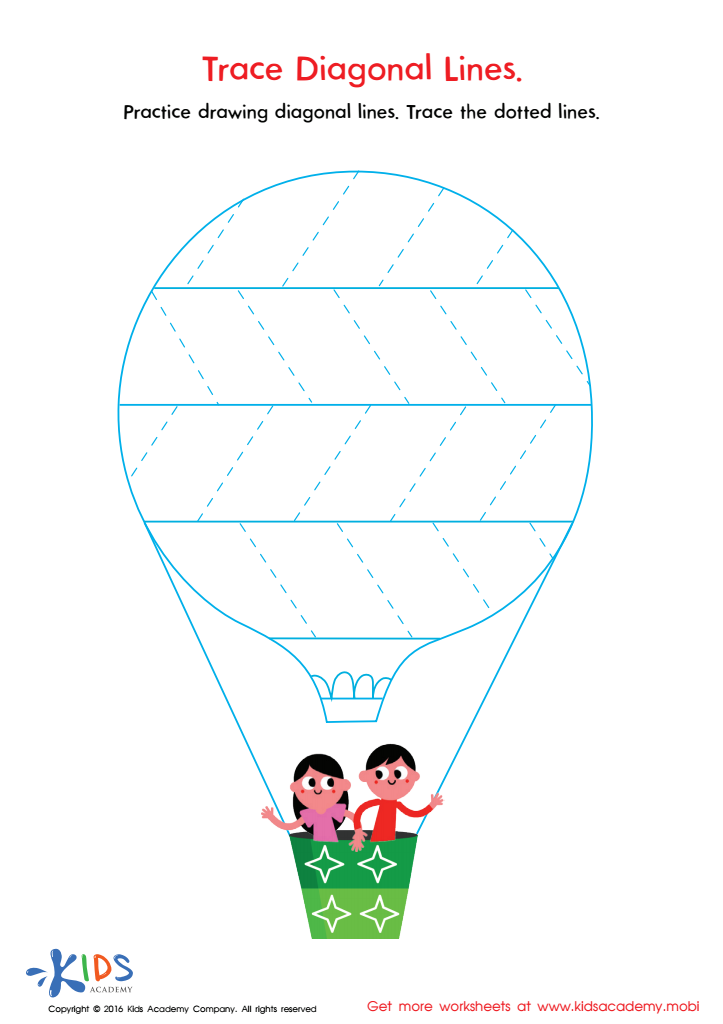Line tracing Worksheets for Kids
1 filtered results
-
From - To


Trace Diagonal Lines Worksheet
Question/Answer
How to train the Line tracing skill in Preschool students learning about Tracing Lines and Curves?
To train line tracing in preschool students, start with simple straight lines and progress to more complex shapes and curves. Use engaging tools like finger paints, markers, or tracing apps. Incorporate fun activities such as tracing over dotted lines or following paths in maze puzzles. Consistent practice with varied and progressively challenging lines will enhance their tracing skills.
Why is the Line tracing skill important for Preschool students?
The line tracing skill is important for preschool students because it helps develop their fine motor skills, hand-eye coordination, and prepares them for writing. Mastering line tracing can improve pencil grip, control, and movement, which are essential for learning to write letters and numbers effectively.
What are some effective activities to train students’ Line tracing skill when teaching them about Tracing Lines and Curves?
Effective activities to train students in line tracing include using worksheets with dashed or dotted lines, finger tracing on sand or salt trays, drawing paths for toys (like cars or animals) to follow, creating shapes or letters with playdough, using water and paintbrushes on sidewalks or chalkboards, and tracing over lines with different materials like yarn, stickers, or cotton swabs.
 Assign to the classroom
Assign to the classroom












